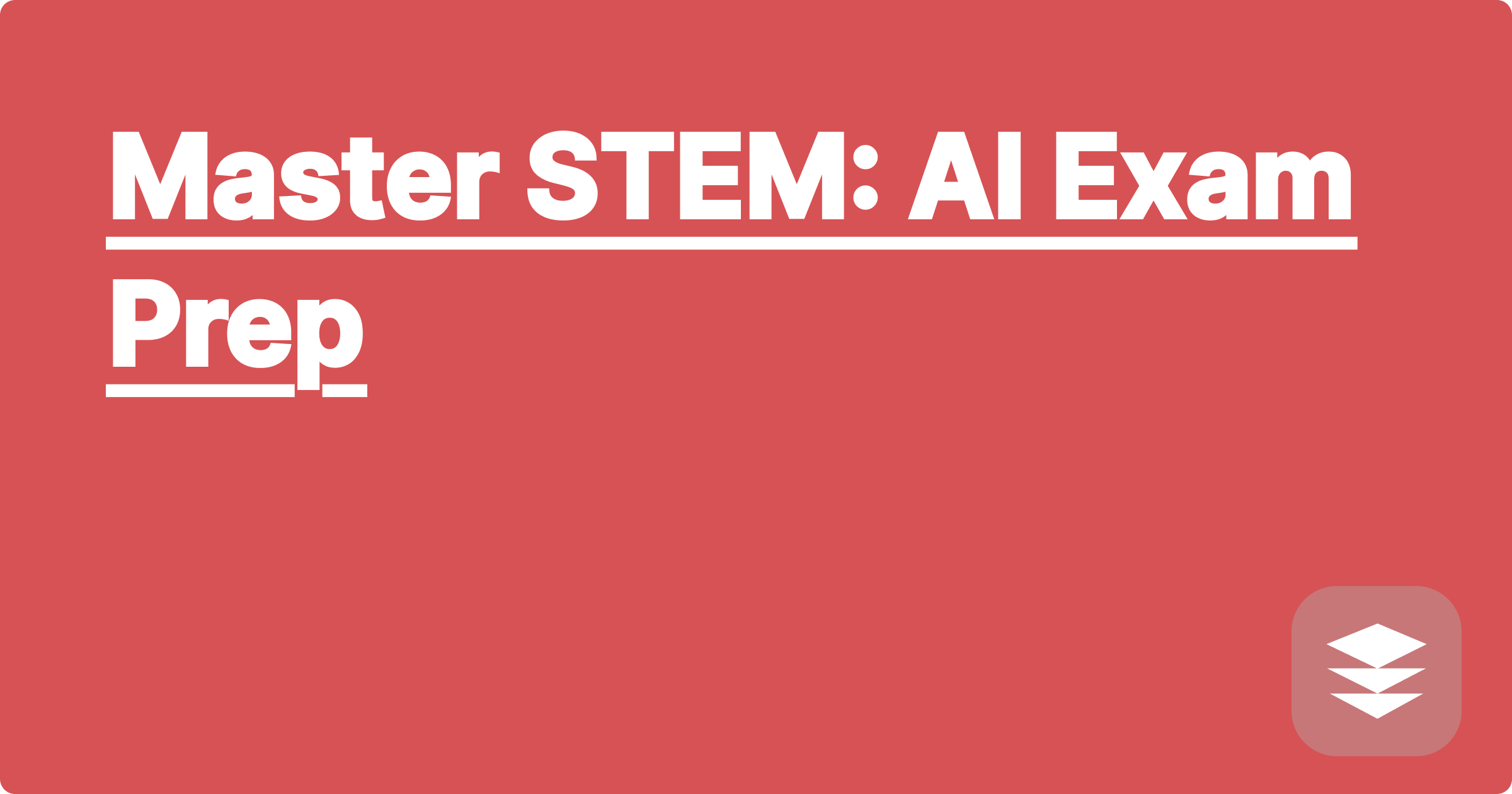
The rigorous demands of STEM education and research often present a formidable challenge: mastering complex concepts and applying them effectively. Students and researchers grapple with vast amounts of information, intricate problem-solving, and the pressure to perform well in exams. Artificial intelligence offers a powerful new set of tools to navigate these challenges, providing innovative ways to prepare for exams, understand complex topics, and enhance overall academic performance.
This shift towards AI-powered learning is not just a trend; it’s a fundamental change in how we can approach STEM education. For students, AI can personalize learning, offering tailored study plans and targeted practice. For researchers, AI can accelerate literature reviews, assist in data analysis, and even help formulate new hypotheses. Understanding how to leverage these tools is becoming increasingly crucial for success in the competitive landscape of STEM.
STEM exams often require a deep understanding of complex concepts, the ability to apply those concepts to novel problems, and the proficiency to solve problems efficiently under time constraints. Traditional study methods, like rote memorization and passive reading, often fall short in preparing students for the higher-order thinking skills required in these exams. Students may struggle to connect disparate concepts, apply theoretical knowledge to practical scenarios, and manage the sheer volume of information they need to absorb. Furthermore, the pressure of high-stakes exams can lead to anxiety and hinder performance, exacerbating the challenges students face. This problem isn't limited to undergraduate studies; graduate students and researchers also face similar challenges when preparing for qualifying exams, comprehensive exams, or even presentations of their research findings.
AI tools like ChatGPT, Claude, and Wolfram Alpha offer a dynamic and interactive approach to exam preparation. These tools go beyond simple question-and-answer formats, providing personalized learning experiences. ChatGPT, for instance, can be used to generate practice questions, explain complex concepts in simpler terms, and even simulate exam scenarios. Claude can assist in summarizing research papers, identifying key concepts, and providing alternative explanations for difficult material. Wolfram Alpha excels at computational tasks, allowing students to verify their calculations, explore different problem-solving approaches, and visualize complex mathematical concepts. By integrating these tools into their study routines, STEM students and researchers can transform their exam preparation from a passive exercise into an active and engaging learning process.
Begin by identifying the specific areas where you need the most support. If you struggle with understanding a particular concept, use ChatGPT or Claude to explain it in different ways, providing analogies or real-world examples. Then, practice applying the concept by asking the AI to generate practice problems. If you are preparing for a computationally intensive exam, use Wolfram Alpha to work through example problems and verify your solutions. As you progress, analyze your performance and identify recurring mistakes. Use the AI tools to delve deeper into the areas where you are making errors and solidify your understanding. Finally, simulate exam conditions by using the AI to generate a practice test and completing it under timed conditions. This will help you manage your time effectively and reduce exam anxiety.
Consider a student preparing for an exam on fluid mechanics. They could use ChatGPT to explain Bernoulli's principle in simpler terms and provide real-world examples of its application. They could then ask ChatGPT to generate practice problems involving Bernoulli's principle in different contexts, such as calculating the lift on an airplane wing or the pressure drop in a pipe. Alternatively, a researcher preparing for a presentation on their work in machine learning could use Claude to summarize key research papers in the field and identify the most relevant concepts to their own work. They could then use Wolfram Alpha to visualize the performance of different machine learning algorithms and generate graphs for their presentation. For example, they might input a specific dataset and ask Wolfram Alpha to calculate the accuracy and precision of a logistic regression model, then visualize the results in a confusion matrix.
To maximize the benefits of AI tools in STEM education and research, it’s essential to use them strategically. Don't rely solely on AI for answers; instead, use them to enhance your understanding and critical thinking skills. Always verify the information provided by AI tools with reliable sources and consult with professors or mentors when needed. Experiment with different AI tools to find the ones that best suit your learning style and research needs. Finally, remember that AI tools are meant to supplement, not replace, traditional learning methods. Combine AI-powered learning with active recall, spaced repetition, and hands-on practice to achieve the best results.
In conclusion, AI is revolutionizing the way STEM students and researchers can approach learning and exam preparation. By understanding the power of these tools and using them strategically, you can gain a significant advantage in your academic pursuits. Embrace the potential of AI, explore its diverse applications, and unlock new levels of understanding and success in your STEM journey. Start by identifying your specific needs and exploring the functionalities of different AI tools. Integrate these tools into your existing study routine and experiment with different approaches to find what works best for you. The future of STEM learning is here, and it’s powered by AI.
Ace STEM Exams: AI Study Planner
AI for Lab Data: Analyze Faster
STEM Prep: AI-Powered Flashcards
AI Coding Assistant: Debug Code
Engineering AI: Design & Simulate